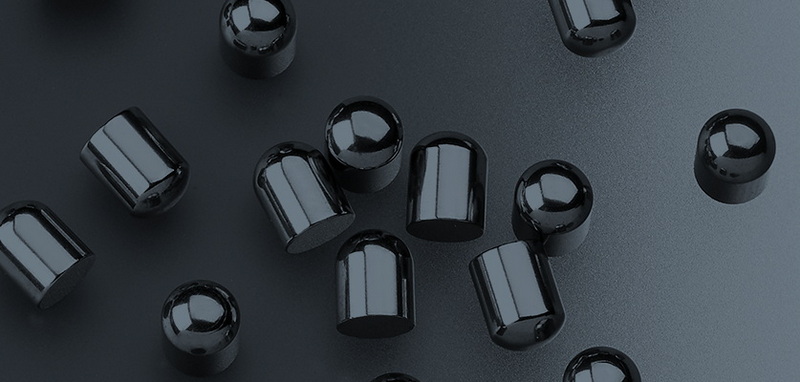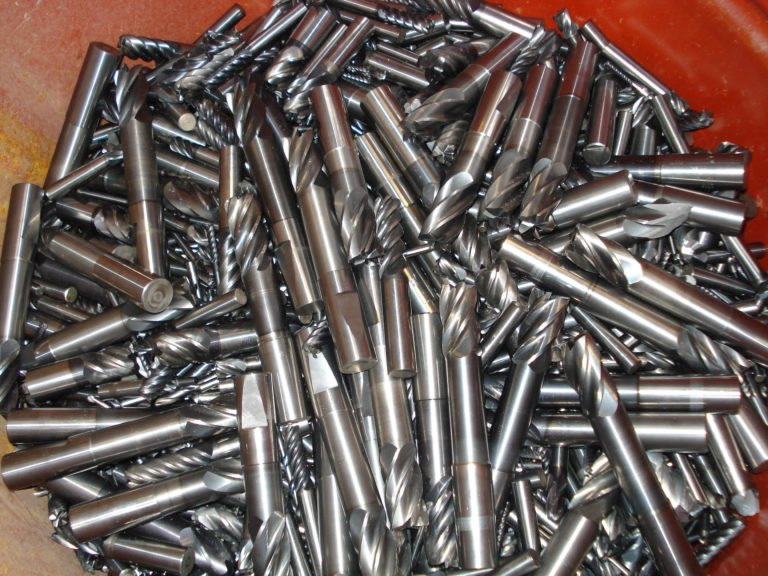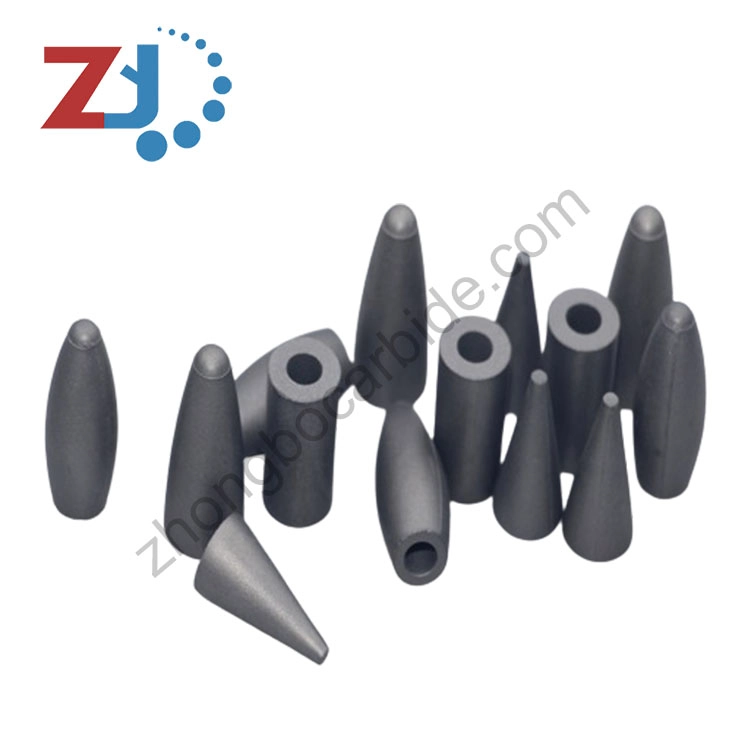Content Menu
● What is Tungsten Carbide?
>> Properties of Tungsten Carbide
>> Applications of Tungsten Carbide
● Techniques for Melting Tungsten Carbide
>> 1. Electric Arc Melting
>> 2. Induction Heating
>> 3. Electron Beam Melting
>> 4. Laser Melting
>> 5. Vacuum Arc Melting
● Challenges in Melting Tungsten Carbide
● Recycling Tungsten Carbide
● The Future of Tungsten Carbide
● Conclusion
● FAQ
>> 1. What is the melting point of tungsten carbide?
>> 2. Why is tungsten carbide so hard?
>> 3. What are the main applications of tungsten carbide?
>> 4. Can tungsten carbide be recycled?
>> 5. What are the challenges in melting tungsten carbide?
● Citations:
Tungsten carbide is a compound renowned for its exceptional hardness, wear resistance, and high melting point. It is widely used in various industries, ranging from cutting tools and construction to aerospace and even jewelry[2][4]. But can tungsten carbide be melted? The answer is yes, but it requires specialized techniques and equipment due to its extremely high melting point[3][7]. This article delves into the methods used to melt tungsten carbide, its properties, applications, and the challenges involved.

What is Tungsten Carbide?
Tungsten carbide (WC) is a chemical compound comprising tungsten and carbon atoms[4]. It is not a pure metal but a ceramic-like material often used in the form of cemented carbide, where tungsten carbide particles are bonded together by a metallic binder, typically cobalt[6]. This composite material combines the properties of high hardness and wear resistance of tungsten carbide with the toughness and strength of the binder metal[4].
Properties of Tungsten Carbide
Tungsten carbide possesses a unique set of properties that make it invaluable in numerous applications[2]:
- High Hardness: It is exceptionally hard, second only to diamond, making it ideal for cutting and drilling tools[4][6].
- High Density: Its high density contributes to its effectiveness in applications such as ammunition and weights[4].
- High Melting Point: Tungsten carbide has a very high melting point of approximately 2,870 °C (5,200 °F), which is lower than pure tungsten (3,422 °C or 6,192 °F) but still requires specialized melting techniques[3][7].
- Wear Resistance: It exhibits excellent resistance to wear and abrasion, making it suitable for high-stress applications[2].
- Corrosion Resistance: Tungsten carbide is resistant to many forms of corrosion, enhancing its durability in harsh environments[2].
- High Strength: It has a compressive strength that often surpasses that of steel, providing robustness in demanding conditions[2][4].
Applications of Tungsten Carbide
The unique properties of tungsten carbide make it a sought-after material across various industries[2]:
- Cutting Tools: Used in drill bits, milling cutters, and saw blades for machining tough materials[6][8].
- Construction: Employed in construction materials like saws and drill bits due to its unbreakability[2].
- Mining and Drilling: Utilized in mining and foundation drilling equipment for its wear resistance[6].
- Ammunition: Used in armor-piercing ammunition due to its hardness and density[6].
- Surgical Instruments: Applied in surgical instruments for enhanced performance and corrosion resistance[2].
- Sports Equipment: Found in sports equipment like golf clubs and ski poles for durability[2][4].
- Jewelry: Used in jewelry for its scratch resistance and unique aesthetic[6].
- Electrical Components: Used in light bulbs and other electrical components due to its heat resistance[2].
- Aerospace: Applied in space satellites because of its resistance to extreme temperature fluctuations[2].

Techniques for Melting Tungsten Carbide
Melting tungsten carbide is a challenging process due to its high melting point. Traditional methods are often inadequate, necessitating specialized techniques[3]. Here are some of the primary methods employed:
1. Electric Arc Melting
Electric arc melting is a conventional method used to melt tungsten carbide and other high-melting-point materials[3]. This technique involves creating an electric arc between two electrodes. The intense heat generated by the arc causes the tungsten carbide material to melt. Electric arc melting offers advantages such as simplicity, flexibility in batch sizes, and the ability to achieve high-purity tungsten carbide ingots[3]. This method is commonly used for the production of raw tungsten carbide feedstock.
2. Induction Heating
Induction heating is a precise and efficient technique for melting tungsten carbide[3]. It employs electromagnetic fields to generate heat directly within the material. An alternating current (AC) is passed through a coil, inducing eddy currents within the tungsten carbide, resulting in resistive heating. Induction heating provides excellent temperature control, uniform heating, and reduced oxidation due to the absence of direct contact with heating elements[3]. This method is often used for applications that require specific melting conditions or high-purity requirements.
3. Electron Beam Melting
Electron beam melting (EBM) is another sophisticated technique used for melting tungsten carbide. In this method, a focused beam of high-energy electrons is directed onto the tungsten carbide material within a vacuum chamber[3]. The kinetic energy of the electrons is converted into heat upon impact, causing the material to melt. EBM offers several advantages, including high purity, precise control over the melting process, and the ability to produce complex shapes[3]. It is particularly useful for applications in aerospace and biomedical engineering where high-quality materials are essential.
4. Laser Melting
Laser melting is a modern technique that has gained attention as a potential method for melting tungsten carbide[3]. In laser melting, a high-intensity laser beam is directed onto the tungsten carbide material, generating heat and causing localized melting. Laser melting offers advantages like rapid heating, reduced heat-affected zones, and the ability to produce intricate structures through additive manufacturing processes[3]. However, challenges such as managing heat dissipation and achieving uniform melting still need to be addressed to fully harness its potential.
5. Vacuum Arc Melting
Vacuum arc melting (VAM) is a technique used to melt tungsten carbide in a vacuum environment[3]. This method involves striking an arc between the material to be melted and an electrode. The vacuum environment helps to reduce contamination and prevents oxidation during the melting process. VAM is particularly useful for producing high-purity tungsten carbide alloys with improved mechanical properties[3].
Challenges in Melting Tungsten Carbide
Despite the availability of these advanced techniques, melting tungsten carbide presents several challenges:
- High Temperature Requirements: Achieving the necessary temperatures to melt tungsten carbide requires significant energy input and specialized equipment[3].
- Equipment Costs: The equipment used for these melting techniques, such as electric arc furnaces, induction heaters, and electron beam melting systems, can be very expensive[3].
- Contamination Control: Maintaining a controlled environment to prevent contamination during the melting process is crucial for preserving the quality of the final product[3].
- Uniformity: Ensuring uniform heating and melting of the material can be difficult, especially for large volumes[3].
- Material Degradation: At high temperatures, tungsten carbide can undergo decomposition or react with the environment, leading to changes in its composition and properties[1].
Recycling Tungsten Carbide
Tungsten carbide scrap is highly valuable and is one of the best candidates for recycling[4]. The recycling process typically involves several steps[1]:
1. Collection and Sorting: Tungsten carbide scrap is collected from various sources and sorted based on its composition and condition[1].
2. Chemical Processing: The scrap is chemically treated to remove binder metals like cobalt, often using acids[1].
3. Powder Preparation: The remaining tungsten carbide is processed into a powder form[1].
4. Consolidation: The powder is then consolidated using techniques like sintering to create new tungsten carbide products[1].
Recycling tungsten carbide not only conserves valuable resources but also reduces energy consumption and environmental impact compared to producing new tungsten carbide from raw materials[4].
The Future of Tungsten Carbide
The future of tungsten carbide looks promising, with ongoing research and development focused on enhancing its properties and expanding its applications. Some key areas of focus include:
- Nanomaterials: Developing tungsten carbide nanomaterials with improved hardness, toughness, and wear resistance.
- Coatings: Creating advanced coatings to protect tungsten carbide tools and components from wear, corrosion, and high temperatures[6].
- Additive Manufacturing: Utilizing additive manufacturing techniques like 3D printing to produce complex tungsten carbide parts with tailored properties[3].
- Sustainable Production: Developing more sustainable and environmentally friendly methods for producing and recycling tungsten carbide[4].
As technology advances, tungsten carbide will likely continue to play a critical role in various industries, driving innovation and improving performance in countless applications.
Conclusion
Melting tungsten carbide is indeed possible, although it requires specialized techniques such as electric arc melting, induction heating, electron beam melting, laser melting, and vacuum arc melting[3]. These methods enable the material to be processed for various applications, capitalizing on its exceptional hardness, wear resistance, and high-temperature stability[2][4]. Despite the challenges associated with its high melting point and the need for precise control during the melting process, the unique properties of tungsten carbide make it an indispensable material in numerous industries[3][7]. Moreover, the ability to recycle tungsten carbide scrap adds to its sustainability and economic value[4]. As research and development continue, we can expect to see even more innovative applications of tungsten carbide in the future.

FAQ
1. What is the melting point of tungsten carbide?
The melting point of tungsten carbide is approximately 2,870 °C (5,200 °F)[3][7].
2. Why is tungsten carbide so hard?
Tungsten carbide is exceptionally hard due to the strong covalent bonds between tungsten and carbon atoms, as well as its dense crystal structure[4][6].
3. What are the main applications of tungsten carbide?
The main applications of tungsten carbide include cutting tools, construction materials, mining equipment, ammunition, surgical instruments, and wear-resistant parts[2][6][8].
4. Can tungsten carbide be recycled?
Yes, tungsten carbide scrap is highly recyclable. The recycling process involves chemical treatment, powder preparation, and consolidation techniques to create new products[4][1].
5. What are the challenges in melting tungsten carbide?
The challenges include the high temperature requirements, equipment costs, contamination control, ensuring uniformity, and preventing material degradation[3][1].
Citations:
[1] https://www.sciencemadness.org/whisper/viewthread.php?tid=160296
[2] https://www.tungco.com/insights/blog/5-tungsten-carbide-applications/
[3] https://be-cu.com/blog/how-to-melt-tungsten/
[4] https://www.carbide-usa.com/top-5-uses-for-tungsten-carbide/
[5] https://www.reddit.com/r/metalworking/comments/3nb8jz/how_to_melt_tungsten/
[6] https://en.wikipedia.org/wiki/Tungsten_carbide
[7] https://chemistry.stackexchange.com/questions/16640/how-do-you-melt-metals-with-super-high-melting-points
[8] https://www.sollex.se/en/blog/post/about-cemented-tungsten-carbide-applications-part-1
















